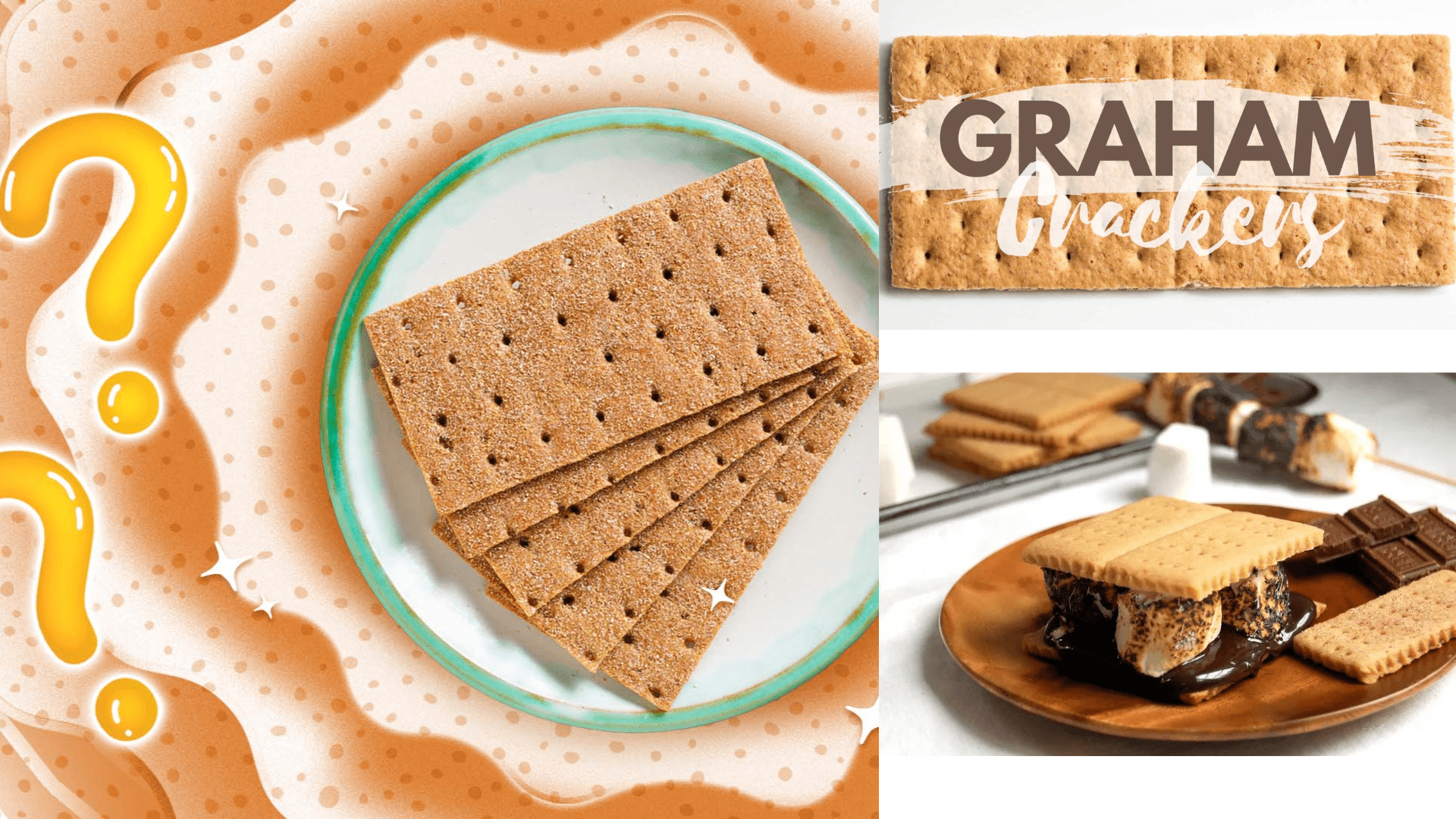Introduction
Graham crackers, a staple in many households, have a history as rich as their flavor. To understand why these delicious treats were invented, we need to delve into the intriguing past of Sylvester Graham, a prominent figure in the 19th-century health movement.
Who was Sylvester Graham?
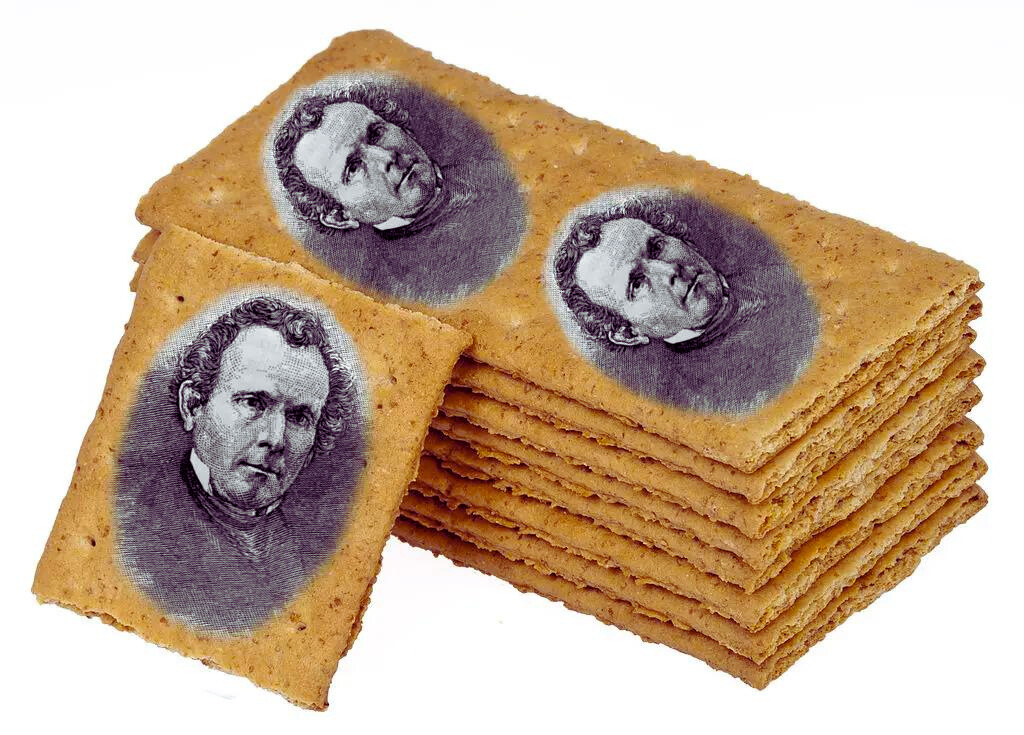
Sylvester Graham, born in 1794, was a prominent figure in the 19th-century United States, known for his contributions to dietary and health reform. While he began his career as a Presbyterian minister, Graham’s legacy extends far beyond the pulpit. He became a fervent advocate for healthful living, influencing dietary practices and sparking a movement that would leave a lasting impact on American wellness culture.
Early Life and Education
Sylvester Graham was born in West Suffield, Connecticut. Little is known about his early life, but he pursued education, eventually attending Amherst College. His academic pursuits laid the groundwork for his later endeavors, merging his religious convictions with a passion for health.
Transition to Ministry
After completing his education, Graham entered the ministry, becoming a Presbyterian minister. His preaching style was unconventional for the time, emphasizing spiritual matters and the importance of a healthful lifestyle. Graham believed that the body and soul were interconnected and that maintaining physical well-being was integral to spiritual purity.
Graham’s Health Philosophy
Graham’s health philosophy was deeply rooted in his religious convictions. He believed that adhering to a simple, natural lifestyle, including a plant-based diet, could lead to better physical health and moral purity. His teachings emphasized moderation, abstinence from stimulants, and the consumption of whole, minimally processed foods.
The Graham Diet
Central to Graham’s dietary recommendations was promoting whole grains, particularly unrefined wheat flour. He advocated for the consumption of fruits, vegetables, and a diet free from excessive spices and stimulants. This approach, known as the Graham Diet, gained popularity and laid the foundation for later dietary movements.
Influence on Health Reform
Graham’s ideas gained traction, and he became a key figure in the health reform movement of the 19th century. His followers, known as Grahamites, embraced his principles and propagated them across the United States. Graham’s influence extended beyond the realm of religion, permeating discussions on health, nutrition, and lifestyle choices.
Graham Crackers and Culinary Legacy
While Sylvester Graham is perhaps most widely known for his creation of graham crackers, his legacy encompasses much more. Graham crackers were initially conceived as part of his broader efforts to promote a healthful diet. The crackers were simple and made from unrefined flour, aligning with Graham’s principles of wholesome nutrition.
Later Life and Legacy
Sylvester Graham passed away in 1851, leaving behind a legacy that transcended his time. His ideas continued to shape discussions on diet and health, influencing subsequent generations of health advocates. Graham’s impact is particularly evident in the enduring popularity of graham crackers, which have evolved from a health food to a beloved snack enjoyed by millions.
In summary, Sylvester Graham was a multifaceted individual — a minister, health reformer, and the creator of graham crackers. His beliefs in the connection between physical and spiritual well-being left an indelible mark on American history, shaping conversations about health and nutrition that persist to this day.
The Health Movement of the 19th Century
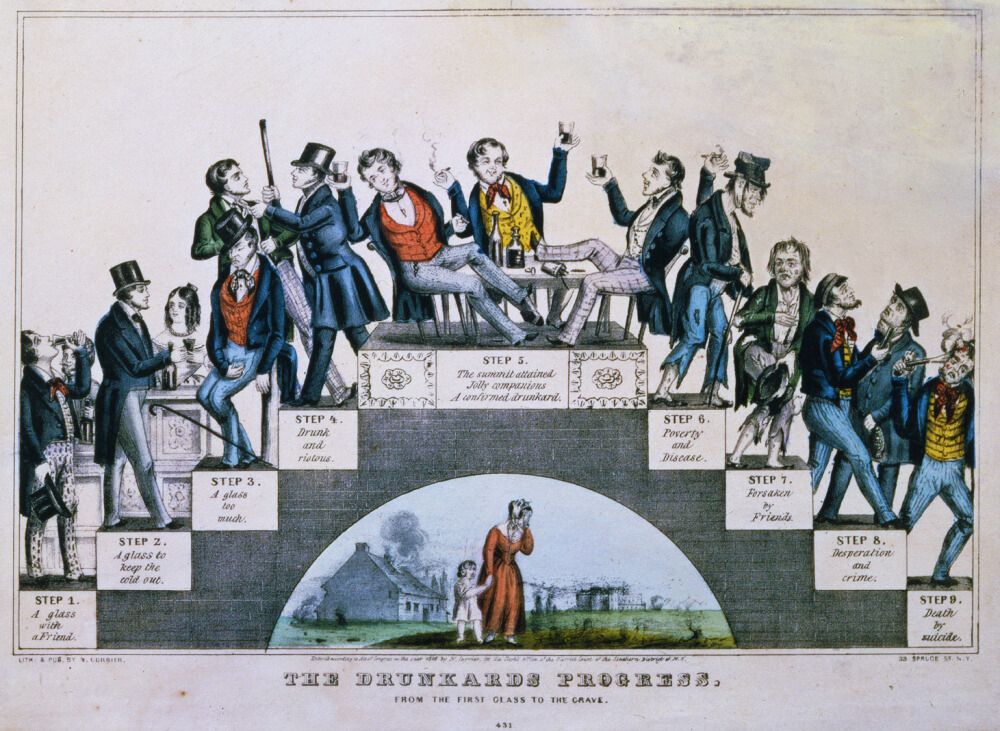
The 19th century was marked by a fervent health movement that sought to address a myriad of health concerns prevalent during that time. This movement was characterized by a growing awareness of the connection between lifestyle, diet, and overall well-being. Amidst the prevailing health challenges, one notable figure emerged as a champion of healthful living — Sylvester Graham.
Sylvester Graham: A Proponent of Healthful Living
Sylvester Graham, born in 1794, was a Presbyterian minister who became a key influencer in the 19th-century health movement. Graham’s philosophy centered around the belief that dietary choices played a crucial role in maintaining good health. At the heart of his teachings was the idea that a simple, plant-based diet could not only address physical ailments but also contribute to moral and spiritual well-being.
Health Concerns of the 19th Century
The 19th century was characterized by numerous health challenges. The Industrial Revolution brought about significant societal changes, but it also ushered in new health problems. Poor living conditions, inadequate sanitation, and the rise of processed foods contributed to a host of health issues, including digestive problems, malnutrition, and various illnesses.
Graham’s Philosophy on Diet and Health
Sylvester Graham’s teachings were a response to the health concerns of his time. He advocated for a return to nature and simplicity in all aspects of life, particularly in diet. Graham believed that a diet based on whole grains, fruits, and vegetables could not only prevent diseases but also promote physical and moral purity.
The Graham Diet
Central to Graham’s dietary recommendations was the promotion of whole wheat flour, which he believed retained more nutritional value than refined flour. He encouraged the consumption of fruits, vegetables, and a plant-based diet devoid of excessive spices, condiments, and stimulants. Graham’s dietary principles were more than just a means to physical health; they were seen as a path to spiritual and moral elevation.
Influence on Health Practices
Graham’s ideas gained traction, and his followers, known as Grahamites, began to adopt his dietary principles. This movement contributed to the popularization of vegetarianism, the use of whole grains, and the promotion of a holistic approach to health. Graham’s impact on health practices persisted, leaving an indelible mark on the wellness movements that followed.
Legacy of the 19th-Century Health Movement
The 19th-century health movement, with Sylvester Graham at its forefront, laid the foundation for modern discussions about the interplay between diet and health. While some specific dietary recommendations have evolved, the core idea that lifestyle choices significantly affect well-being remains relevant today.
As we explore the history of graham crackers, it becomes clear that their invention by Sylvester Graham was not merely about creating a tasty snack but was rooted in a broader movement that sought to address the health challenges of the 19th century. Graham’s teachings on diet and health continue to echo our understanding of wellness, making his contributions an integral part of health history.
The Birth of Graham Crackers
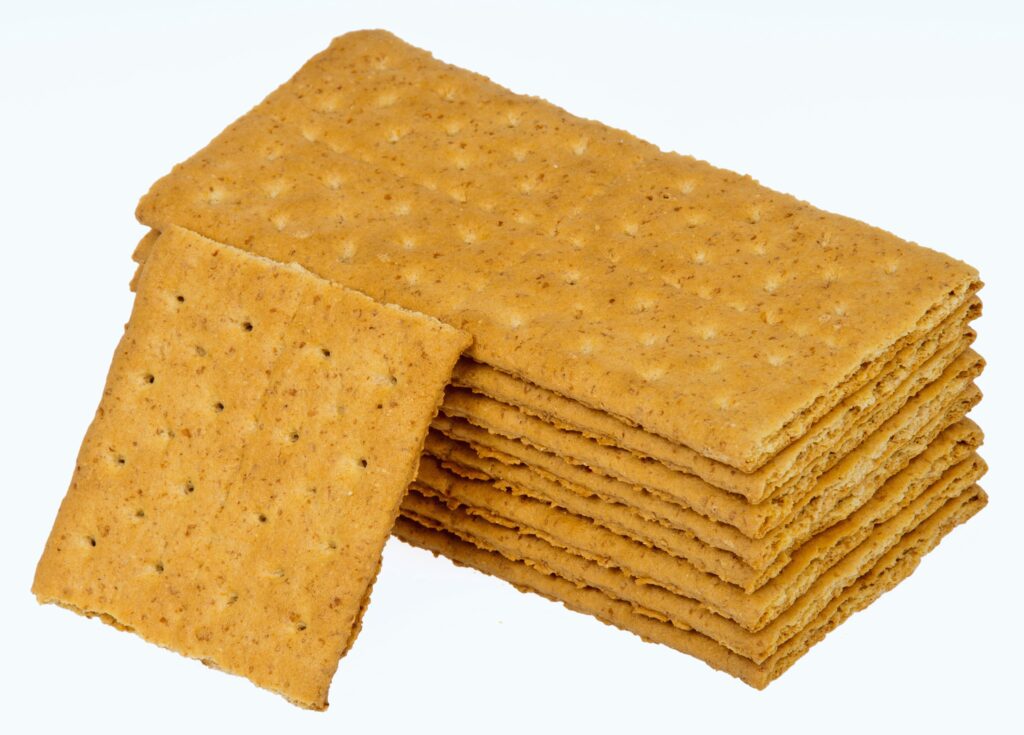
The birth of graham crackers can be traced back to the visionary ideas of Sylvester Graham, a 19th-century reformer and health enthusiast. While today we often enjoy graham crackers as a tasty snack or a key ingredient in various desserts, their origin lies in Graham’s earnest efforts to promote a healthful and simple diet.
Sylvester Graham’s Vision
Sylvester Graham, born in 1794, was a Presbyterian minister who firmly believed in the connection between diet, health, and moral well-being. In his quest to improve the health of the American population, Graham developed a set of dietary principles that advocated for the consumption of natural, whole foods, particularly plant-based options.
A Response to Industrialization
The 19th century was marked by significant societal changes, including rapid industrialization. With these changes came concerns about the quality of food, as processed and refined products became more prevalent. Graham saw the negative health effects of these dietary shifts and sought to provide an alternative.
The Creation of Graham Crackers
In the 1820s, as an extension of his dietary teachings, Sylvester Graham invented what we now know as graham crackers. These crackers were initially a far cry from the sweetened versions we enjoy today. Made from unrefined wheat flour and devoid of unnecessary additives, Graham’s crackers were a simple and wholesome alternative to the overly processed bread of the time.
Purpose and Recipe
The original graham cracker recipe reflected Graham’s emphasis on health. It typically included a combination of unbleached flour, wheat bran, and germ. The crackers were meant to be consumed as part of a balanced diet, aligning with Graham’s belief that dietary choices had a direct impact on physical and moral well-being.
Graham Crackers as a Health Food
During their early years, graham crackers were primarily viewed as a health food. Graham promoted them as part of his broader efforts to encourage a more natural and plant-based diet. The crackers gained popularity among Graham’s followers, known as Grahamites, who embraced his teachings on healthful living.
Evolution Over Time
While graham crackers started as a health-conscious creation, their evolution did not stop there. Over the years, as dietary preferences shifted and consumer tastes changed, the crackers underwent modifications. Sweetened versions emerged, incorporating honey, molasses, or sugar, transforming them into the familiar, slightly sweet treats we know today.
Popularity and Adoption
As graham crackers evolved, their popularity grew beyond the health-conscious circles. They found their way into mainstream culture, becoming a staple in many households. The crackers’ versatility, subtle sweetness, and crunchy texture contributed to their widespread adoption as a snack enjoyed by people of all ages.
In conclusion, the birth of graham crackers is intertwined with Sylvester Graham’s vision for a healthful and natural diet. From their humble beginnings as simple, unadorned crackers, graham crackers have evolved into a beloved snack that continues to hold a unique place in the culinary landscape. As we indulge in the delightful taste of graham crackers today, it’s worth remembering their roots in a movement that sought to promote both physical and moral well-being through thoughtful dietary choices.
Evolution of Graham Crackers
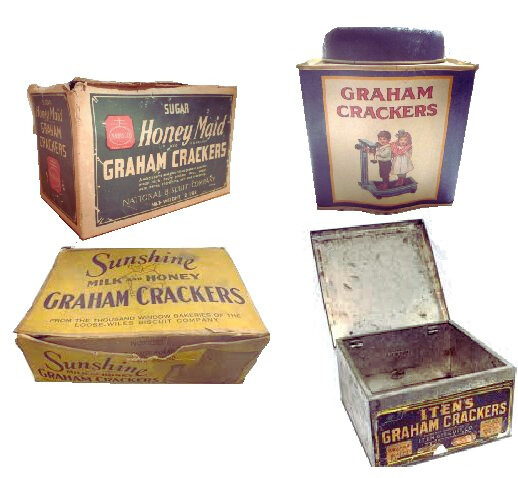
The evolution of graham crackers is a fascinating journey that mirrors changing dietary preferences, cultural shifts, and the dynamic nature of the food industry. From their inception as a health-focused creation by Sylvester Graham in the 19th century to their present status as a beloved snack, graham crackers have undergone significant transformations.
Sylvester Graham’s Original Vision
Sylvester Graham’s original graham crackers were a testament to his commitment to healthful living. Crafted from unrefined wheat flour and devoid of excessive additives, the crackers were created as part of Graham’s broader efforts to promote a natural, plant-based diet. These early graham crackers were plain, and crisp, and held a place in the diet of Graham’s followers, known as Grahamites.
Shift to Sweetened Versions
As the 19th century progressed, so did the evolution of graham crackers. One notable shift was the introduction of sweetened versions. While Graham’s original recipe was relatively austere, new iterations emerged, incorporating ingredients like honey, molasses, or sugar. This added sweetness appealed to a broader audience, transforming graham crackers from a purely health-focused food into a more palatable and versatile snack.
Rise in Popularity
The sweetened evolution of graham crackers contributed to their rise in popularity. No longer confined to health food stores, these crackers found their way into mainstream culture. Their crunchy texture and subtle sweetness made them a favorite among both children and adults. Graham crackers became a pantry staple, often used as a base for desserts or enjoyed on their own.
Regional and Cultural Adaptations
As graham crackers gained popularity, their recipes underwent regional and cultural adaptations. Different regions put their spin on the classic cracker, incorporating local flavors and preferences. This adaptability contributed to the crackers’ widespread acceptance and incorporation into diverse culinary traditions.
Graham Crackers in the 20th Century
The 20th century witnessed a further evolution of graham crackers. They transitioned from being perceived primarily as a health food to becoming a versatile ingredient in a variety of desserts. Graham cracker crusts became a popular choice for pies and cheesecakes, showcasing the crackers’ ability to enhance the flavor and texture of sweet treats.
Commercialization and Branding
As graham crackers continued to solidify their place in popular culture, commercialization became a key aspect of their evolution. Brands capitalized on their appeal, introducing variations and marketing strategies to capture consumer attention. Graham crackers became associated not only with health but also with indulgence and nostalgia.
Continued Adaptation in the 21st Century
In the 21st century, graham crackers continue to evolve. While traditional recipes persist, new variations emerge, catering to changing consumer preferences. Graham crackers are now available in different shapes, sizes, and flavors, reflecting the ongoing adaptability of this iconic snack.
Versatility in Modern Cuisine
Graham crackers have proven their versatility in modern cuisine. From classic s’mores to innovative desserts, they remain a go-to ingredient for chefs and home cooks alike. Their role has expanded beyond being a simple cracker, becoming an essential component in a wide array of culinary creations.
In conclusion, the evolution of graham crackers is a dynamic tale of adaptation, innovation, and changing tastes. From Sylvester Graham’s health-focused vision to their current status as a beloved snack and baking ingredient, graham crackers have stood the test of time, proving that a simple cracker can indeed have a complex and flavorful history.
Graham Crackers in the 20th Century
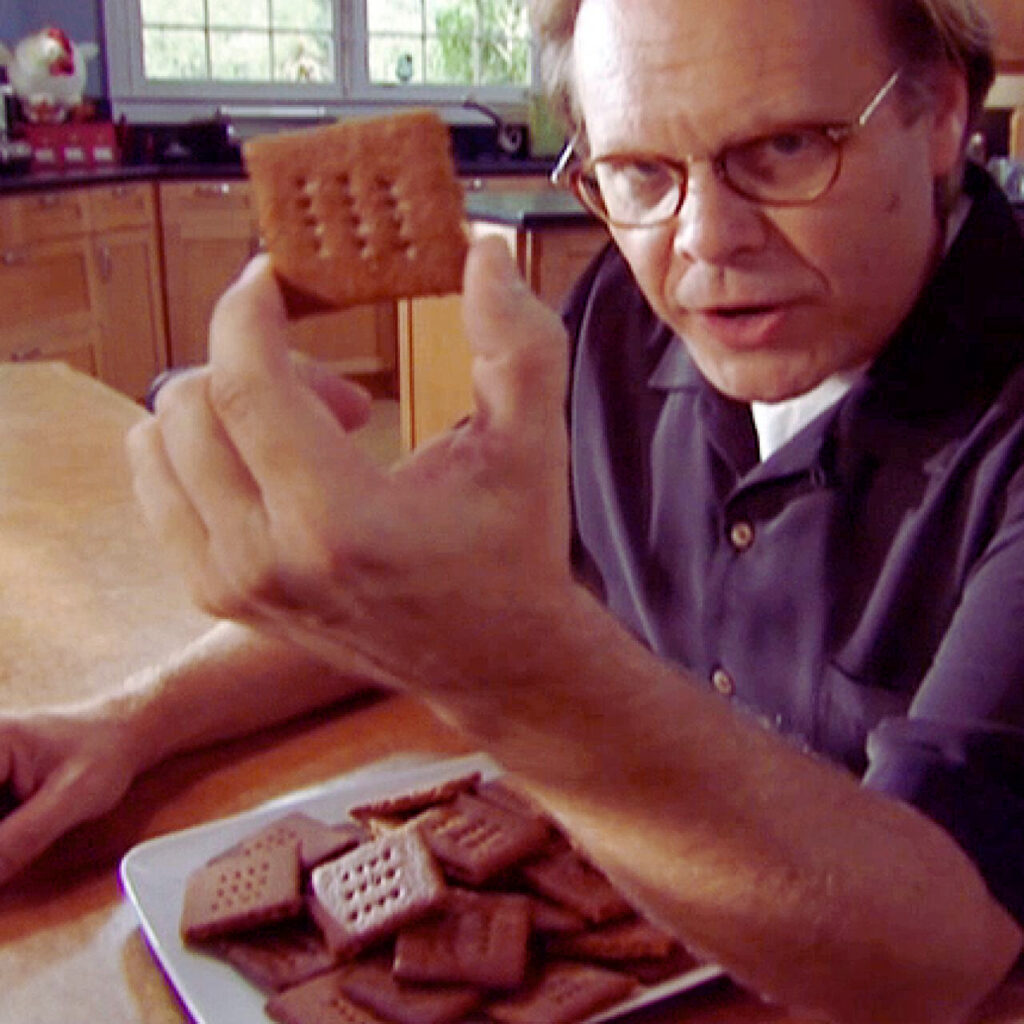
The 20th century marked a transformative period for graham crackers, as they transitioned from their origins as a health-focused creation to becoming a versatile and beloved ingredient in a wide range of desserts. This century saw graham crackers evolve both in terms of their perception and usage, shaping their role in culinary culture.
Transition from Health Food to Mainstream Snack
In the early 20th century, graham crackers underwent a significant shift in perception. Initially positioned as a health food by Sylvester Graham, they began to transcend this categorization. Graham crackers found their way into mainstream culture, becoming a staple in many households across the United States. The crackers’ wholesome image persisted, but they were increasingly embraced as a convenient and enjoyable snack.
Introduction of Sweetened Versions
One of the key developments in the 20th century was the introduction of sweetened graham crackers. While the original recipe by Sylvester Graham was more austere, newer versions incorporated ingredients like honey, molasses, or sugar. This added sweetness appealed to a broader audience and transformed graham crackers into a more indulgent treat.
Iconic Desserts Featuring Graham Crackers
The 20th century witnessed the rise of graham crackers as a crucial ingredient in a variety of iconic desserts. Graham cracker crusts became a popular choice for pies, cheesecakes, and other baked delights. The crackers’ distinctive flavor and texture provided a perfect foundation for these desserts, contributing to their widespread popularity.
Commercialization and Branding
With their increasing popularity, graham crackers became a focal point for commercialization and branding. Recognizable brands began to produce and market graham crackers, each putting its unique spin on the classic treat. Packaging, advertising, and even the shape of the crackers became part of the branding strategy, contributing to their iconic status.
S’mores and Graham Crackers
The 20th century solidified the association between graham crackers and the quintessential campfire treat — s’mores. The combination of graham crackers, marshmallows, and chocolate became a cultural phenomenon, enjoyed by families around campfires and backyard gatherings. Graham crackers played a central role in making s’mores a cherished tradition.
Incorporation into Culinary Culture
As graham crackers continued to gain popularity, their role expanded beyond being a standalone snack or dessert base. They became a versatile ingredient in various recipes, finding their way into no-bake desserts, parfaits, and other creative culinary creations. Their distinct flavor profile made them a sought-after addition to the kitchen.
Introduction of Flavored Varieties
In response to changing consumer tastes, flavored varieties of graham crackers emerged in the 20th century. Cinnamon, chocolate, and honey-flavored graham crackers became available, offering consumers a broader range of options to suit different preferences. This diversification contributed to the continued popularity of graham crackers.
In summary, the 20th century played a pivotal role in shaping the identity of graham crackers. From a health-focused creation in the 19th century, they evolved into a mainstream snack and a key ingredient in iconic desserts. The introduction of sweetened versions, branding efforts, and their role in beloved traditions like s’mores all contributed to the enduring legacy of graham crackers in the culinary landscape.
Role of Graham Crackers in Culinary Culture
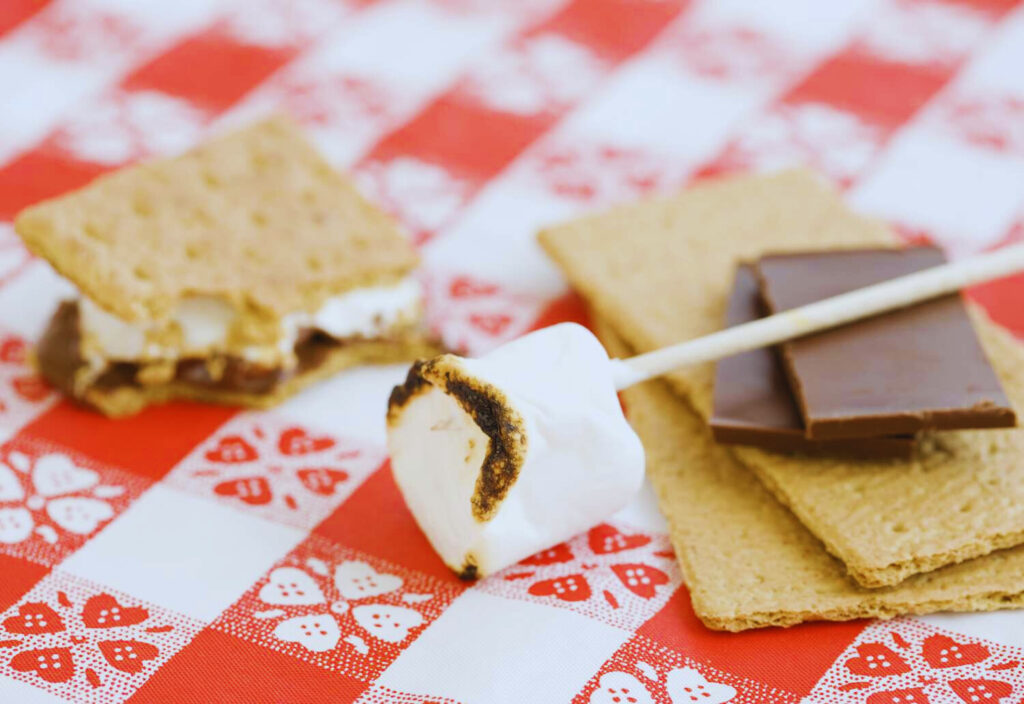
Graham crackers have played a significant and multifaceted role in culinary culture, transcending their humble origins as a health food to become a versatile and beloved ingredient in a wide array of dishes. Their distinct flavor and texture have made them a staple in both classic and innovative recipes, contributing to their enduring popularity in culinary circles.
Use in Dessert Crusts
One of the primary roles of graham crackers in culinary culture is as a base for dessert crusts. The combination of crushed graham crackers, often mixed with butter and sometimes sugar, forms a delectable crust for pies and cheesecakes. The crackers’ subtle sweetness and crunch provide the perfect foundation for a variety of sweet treats.
S’mores and Campfire Tradition
Graham crackers are integral to the iconic campfire treat known as s’mores. The combination of graham crackers, marshmallows, and chocolate has become a cherished tradition, evoking nostalgia and a sense of communal enjoyment. Whether around a campfire or in a backyard setting, graham crackers are a key player in this beloved outdoor dessert experience.
Key Ingredient in No-Bake Desserts
Their no-bake-friendly texture makes graham crackers a go-to ingredient for a variety of no-bake desserts. From refrigerator cakes to icebox pies, these crackers provide a convenient and delicious element to recipes that require minimal or no baking. This versatility has contributed to their popularity in modern dessert-making.
Iconic Dishes Featuring Graham Crackers
Beyond crusts and s’mores, graham crackers feature prominently in iconic dishes. One notable example is the classic s’mores pie, where graham cracker crust meets layers of marshmallow and chocolate. Additionally, graham cracker crumbs often make appearances in parfaits, trifles, and layered desserts, adding a delightful texture and flavor.
Adaptability in Creative Recipes
Graham crackers showcase their adaptability in creative recipes. From incorporating flavored graham crackers into innovative desserts to using them as a crunchy topping for yogurt or ice cream, chefs and home cooks alike have explored various ways to integrate graham crackers into diverse culinary creations.
Fusion in International Cuisine
Graham crackers have transcended cultural boundaries and found their way into international cuisine. While they may have originated in the United States, their use has expanded globally. In some regions, graham crackers are creatively incorporated into traditional dishes, showcasing their versatility and adaptability in different culinary contexts.
Elevated Snacking
Graham crackers have become a popular snack on their own. Whether enjoyed with a spread of peanut butter, a layer of cream cheese or simply as a stand-alone treat, graham crackers offer a wholesome and satisfying snacking experience. This versatility has contributed to their enduring presence in household pantries.
In conclusion, the role of graham crackers in culinary culture is diverse and dynamic. From providing the foundation for classic desserts to being a creative force in modern recipes, these crackers have left an indelible mark on the culinary landscape. Whether enjoyed in traditional dishes or used in innovative ways, graham crackers continue to be a beloved and versatile ingredient in kitchens around the world.
Marketing and Commercialization

The marketing and commercialization of graham crackers have played a pivotal role in their journey from a health-focused creation to a mainstream, beloved snack. Over the years, various brands have seized the opportunity to promote graham crackers, employing strategic marketing techniques to capture consumer attention and foster widespread adoption.
Branding and Packaging
As graham crackers gained popularity, brands recognized the need for effective branding to distinguish their products in a competitive market. Distinctive packaging, often featuring images of crackers or enticing visuals of prepared desserts, became a crucial element in attracting consumers. The packaging not only conveyed information about the product but also contributed to its overall appeal on store shelves.
Advertising Strategies
Advertising played a significant role in the commercialization of graham crackers. Brands utilized various media channels, including print, radio, and later, television, to reach a broader audience. Advertisements often highlighted the versatility of graham crackers, showcasing them not only as a wholesome snack but also as a key ingredient in a variety of desserts. Emotional appeals, such as nostalgia and family bonding, were commonly woven into marketing campaigns to create a positive association with the product.
Diversification of Product Lines
To cater to changing consumer preferences, brands engaged in the diversification of graham cracker product lines. This involved introducing variations such as flavored graham crackers, honey or cinnamon-infused options, and even gluten-free alternatives. This diversification not only expanded the appeal of graham crackers but also tapped into emerging dietary trends.
Sponsorships and Collaborations
In some instances, graham cracker brands sought to enhance their visibility through strategic sponsorships and collaborations. Associating with popular events, television shows, or influencers helped reinforce the presence of graham crackers in the minds of consumers. Collaborations with renowned chefs or participation in cooking competitions further contributed to their image as a versatile and essential kitchen ingredient.
Online Presence and Social Media
With the advent of the internet and social media, graham-cracker marketing entered a new era. Brands leveraged online platforms to engage with consumers, share recipes, and showcase user-generated content. Social media influencers and food bloggers became powerful advocates, creating a virtual community centered around the various uses and pleasures of graham crackers.
Emphasizing Health Benefits
While the initial marketing of graham crackers by Sylvester Graham focused on their health benefits, modern approaches also incorporate health-conscious messaging. Brands highlight the nutritional aspects of graham crackers, positioning them as a wholesome snack option. This emphasis on health aligns with contemporary consumer preferences for balanced and nutritious choices.
Seasonal and Limited-Edition Campaigns
To maintain consumer interest and encourage seasonal consumption, graham cracker brands often roll out seasonal or limited-edition campaigns. This could involve special packaging, themed recipes, or collaborative efforts with other brands. Seasonal campaigns capitalize on holidays and special occasions, making graham crackers a part of festive traditions.
In conclusion, the marketing and commercialization of graham crackers reflect a strategic evolution over time. From traditional advertising methods to embracing the digital age, brands have adapted their approaches to meet the changing preferences of consumers. Through branding, diversification, online engagement, and strategic partnerships, graham crackers have not only become a household name but also a versatile and enduring component of the modern culinary landscape.
Debunking Myths about Graham Crackers

Over the years, graham crackers have accumulated their fair share of myths and misconceptions. Let’s debunk some of these common myths to provide a clearer understanding of this iconic snack.
Myth 1: Graham Crackers are Only for Health Enthusiasts
Debunked: While graham crackers originated from Sylvester Graham’s health movement, they have evolved beyond being solely a health food. Modern variations, including sweetened versions, have made graham crackers a versatile and enjoyable snack for people of all tastes and preferences.
Myth 2: All Graham Crackers are the Same
Debunked: Not all graham crackers are created equal. There are variations in flavor, texture, and ingredients among different brands and even within the same brand. Some may be sweetened, while others stick closer to the original, less-sweetened recipe.
Myth 3: Graham Crackers are Only for Making Pie Crusts
Debunked: While graham cracker crusts are popular, these crackers have a myriad of uses beyond pie crusts. They can be enjoyed on their own, used in s’mores, incorporated into desserts, or crumbled on top of yogurt. Their versatility makes them a go-to ingredient in various culinary creations.
Myth 4: All Graham Crackers are Healthy
Debunked: While the original intention behind graham crackers was to promote health, not all versions align with this goal. Sweetened varieties, in particular, can contain added sugars and fats. It’s essential to read labels and choose options that fit your dietary preferences and nutritional goals.
Myth 5: Graham Crackers are Only for Kids
Debunked: While graham crackers are a popular choice for children’s snacks, they have widespread appeal across all age groups. Their sweet, crunchy nature makes them enjoyable for adults as a standalone snack or as part of sophisticated desserts.
Myth 6: Graham Crackers are Bland
Debunked: While the original graham crackers may have been less sweetened and plain, many modern versions come in a range of flavors. From cinnamon to honey, these variations offer a burst of taste that goes far beyond the perceived blandness of the original recipe.
Myth 7: Graham Crackers Contain Graham Flour Exclusively
Debunked: While graham flour is a key ingredient in traditional graham crackers, not all crackers labeled as “graham” strictly adhere to this. Some commercially available graham crackers may use a combination of flours to achieve a particular texture or taste.
Myth 8: Graham Crackers Expire Quickly
Debunked: Graham crackers typically have a long shelf life, especially when stored properly in a cool, dry place. Sealed packages can last for several months, and even after opening, they can stay fresh for an extended period if stored in an airtight container.
Myth 9: Graham Crackers are Boring
Debunked: Far from boring, graham crackers are a canvas for creativity in the kitchen. From dessert bars to innovative snacks, these crackers can be part of exciting and flavorful culinary experiments.
Myth 10: All Graham Crackers are the Result of Sylvester Graham’s Recipe
Debunked: While Sylvester Graham’s original recipe inspired the creation of graham crackers, not all crackers labeled as such strictly follow his formulation. Commercial variations have evolved to meet diverse consumer preferences and may deviate significantly from the initial health-focused recipe.
In conclusion, graham crackers have withstood the test of time, dispelling myths and evolving to cater to a wide range of tastes and culinary applications. Understanding the diverse nature of graham crackers allows individuals to appreciate their versatility and incorporate them into their diets in a way that aligns with their preferences and nutritional goals.
The Sweet Side of Graham Crackers
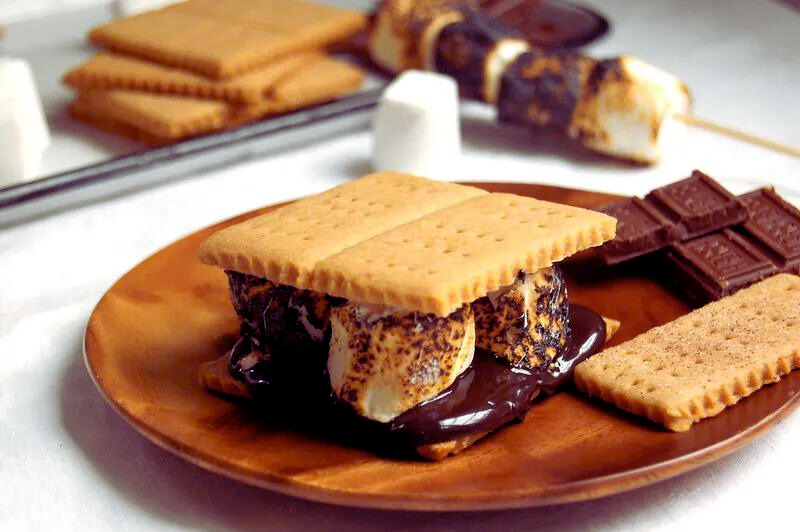
Graham crackers, often associated with health and simplicity, have found a delightful counterpart on the sweet side of the culinary spectrum. From iconic desserts to innovative treats, the sweet side of graham crackers reveals a world of indulgence and creativity that goes beyond their humble origins.
Classic Graham Cracker Crusts
One of the most iconic representations of the sweet side of graham crackers is their use in classic pie and cheesecake crusts. The combination of crushed graham crackers melted butter, and sometimes a touch of sugar creates a sweet, crunchy base that complements creamy fillings. This simple yet irresistible crust has become a hallmark of various beloved desserts.
S’mores: A Campfire Favorite
The sweet side of graham crackers truly shines in the context of s’mores, a timeless campfire treat. The combination of marshmallows, chocolate, and graham crackers creates a harmonious blend of textures and flavors. The crackers’ slightly sweet nature adds the perfect balance to the gooey marshmallow and melted chocolate, making s’mores a beloved indulgence.
Graham Cracker Dessert Bars
Graham crackers play a starring role in the creation of dessert bars. Whether layered with a sweet cream cheese filling, fruit preserves, or chocolate, these bars showcase the crackers’ versatility. The sweet side of graham crackers is on full display as they contribute to the delectable layers and textures of these irresistible treats.
Icebox Cakes and No-Bake Delights
Graham crackers take center stage in the world of no-bake desserts, including icebox cakes. Layered with whipped cream, pudding, or other sweet fillings, graham crackers absorb moisture while maintaining their structure, resulting in a heavenly dessert that requires no oven time. The sweet side of graham crackers is emphasized as they meld with luscious fillings to create a delightful confection.
Flavored Graham Crackers
To cater to diverse palates, the sweet side of graham crackers has expanded to include flavored varieties. Cinnamon, honey, and chocolate-flavored graham crackers provide an extra layer of sweetness and complexity. These variations have become popular choices for those seeking a twist on the classic graham cracker experience.
Graham Cracker Parfaits
In the realm of layered desserts, graham crackers shine in the creation of parfaits. Alternating layers of sweetened whipped cream, fruits, and graham cracker crumbs result in a visually appealing and scrumptious treat. The crackers’ sweetness adds a delightful contrast to the other components, creating a balanced and satisfying dessert.
Creative Sweets Featuring Graham Crackers
The sweet side of graham crackers extends to innovative and creative desserts. From graham cracker truffles to cheesecake-stuffed strawberries with graham cracker crumbs, inventive recipes highlight the crackers’ ability to elevate various sweet treats. Their versatility encourages culinary experimentation, resulting in uniquely delightful confections.
Graham Cracker Ice Cream Sandwiches
Transforming the classic graham cracker into a sweet sandwich, often filled with ice cream, introduces a playful twist to traditional desserts. The crackers’ sweetness complements the cold creaminess of the ice cream, creating a handheld delight that is both nostalgic and satisfying.
In conclusion, the sweet side of graham crackers reveals a world of culinary possibilities beyond their health-focused origins. From classic pie crusts to creative desserts, these versatile crackers add a touch of sweetness to a wide array of treats, making them a beloved ingredient in the realm of indulgent delights.
Impact on the Baking Industry

The impact of graham crackers on the baking industry has been profound, influencing not only the creation of beloved desserts but also contributing to the evolution of baking techniques and consumer preferences. From iconic pie crusts to innovative recipes, graham crackers have left an indelible mark on the baking landscape.
Evolution of Pie and Cheesecake Crusts
Graham crackers have revolutionized the world of pie and cheesecake crusts. The combination of crushed graham crackers melted butter, and sometimes sugar creates a sweet, crunchy foundation that has become a staple in baking. This evolution has influenced the way crusts are conceptualized, moving beyond traditional pastry crusts to embrace the unique texture and flavor that graham crackers impart.
Rise of No-Bake and Icebox Desserts
Graham crackers have played a pivotal role in the popularity of no-bake and icebox desserts. Their ability to maintain structure and absorb moisture without baking makes them an ideal choice for layered desserts. This has influenced the creation of recipes like icebox cakes, where graham crackers act as a convenient and flavorful building block.
Inspiration for Creative Desserts
The versatility of graham crackers has inspired countless creative desserts. From dessert bars and parfaits to graham cracker truffles, bakers have embraced the possibilities that these crackers offer. The sweet, slightly spiced flavor profile of graham crackers serves as a canvas for innovative recipes, encouraging experimentation in the kitchen.
Incorporation into Baking Trends
Graham crackers have become an integral part of baking trends, responding to consumer preferences for convenience and unique flavors. Flavored graham crackers, including cinnamon, honey, and chocolate varieties, have gained popularity, offering a new dimension to traditional recipes. These trends showcase the adaptability of graham crackers to evolving tastes.
Commercial Success and Branding
The success of graham crackers in the baking industry is not only due to their taste but also to effective branding and commercialization. Recognizable brands have capitalized on the versatility of graham crackers, marketing them as a key ingredient in baking and emphasizing their role in creating delightful desserts. This commercial success has solidified graham crackers as a pantry staple.
Expansion of Flavored and Specialty Varieties
As consumer preferences diversify, the baking industry has responded by expanding the range of graham cracker varieties. Flavored graham crackers, gluten-free options, and specialty versions cater to a broad audience. This diversification has contributed to graham crackers being a versatile choice for bakers with varying dietary needs and taste preferences.
Influence on Seasonal and Limited-Edition Offerings
Graham crackers have become a focal point in the creation of seasonal and limited-edition baking offerings. From holiday-themed recipes to collaborations with other brands, graham crackers play a role in the ever-changing landscape of seasonal treats. This influence contributes to the excitement and anticipation surrounding special baking releases.
Continued Integration into Culinary Culture
The enduring popularity of graham crackers in baking showcases their continued integration into culinary culture. Bakers, both professional and amateur, incorporate graham crackers into traditional and modern recipes, ensuring their relevance in a dynamic and evolving baking industry.
In conclusion, the impact of graham crackers on the baking industry is multifaceted. From influencing crust preferences to inspiring creative desserts and contributing to baking trends, graham crackers have become a versatile and cherished ingredient. Their journey from a health-focused creation to a beloved baking staple underscores their enduring influence on the world of sweet treats.
Modern Perceptions of Graham Crackers
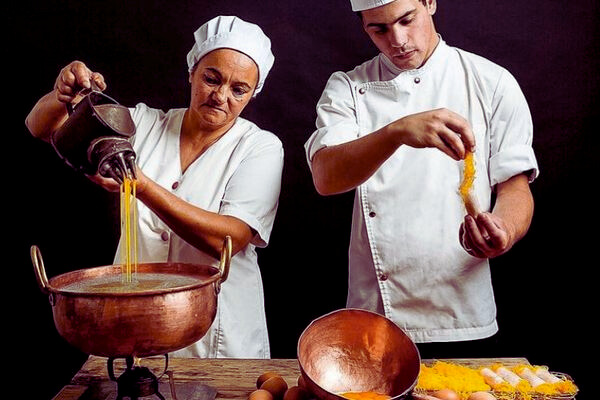
Modern perceptions of graham crackers reflect a dynamic evolution from their original association with healthful living to their current status as a versatile and beloved snack. In today’s culinary landscape, graham crackers are embraced for their nostalgic appeal, diverse uses in desserts, and adaptability that caters to a wide range of tastes.
Nostalgia and Comfort
One prevailing modern perception of graham crackers is rooted in nostalgia and a sense of comfort. Many individuals associate graham crackers with childhood memories, whether through classic s’mores around a campfire or the comforting taste of a graham cracker crust in a family favorite pie. This nostalgic connection contributes to the enduring popularity of graham crackers across generations.
Versatility in Desserts
Modern perceptions highlight the incredible versatility of graham crackers in dessert creations. No longer confined to being a mere crust for pies, graham crackers are celebrated for their ability to elevate various desserts. From cheesecakes and dessert bars to parfaits and innovative trifle recipes, graham crackers have become a go-to ingredient for adding a sweet and crunchy element to a wide array of treats.
Convenient Snacking
Graham crackers have established themselves as a convenient and satisfying snack option in the modern era. Whether enjoyed on their own or paired with spreads like peanut butter or cream cheese, graham crackers provide a quick and portable snack that caters to both adults and children. Their inherent sweetness makes them a delightful choice for a midday pick-me-up or a guilt-free indulgence.
Health-Conscious Appeal
While modern perceptions of graham crackers have moved away from their strict association with health foods, there remains an appreciation for their relatively simple and wholesome ingredients. Some consumers still opt for graham crackers as a snack with perceived health benefits, appreciating their unpretentious nature compared to overly processed alternatives.
Creative Culinary Ingredient
Modern chefs and home cooks view graham crackers as a creative culinary ingredient rather than a mundane pantry staple. Their unique flavor and texture make them a canvas for experimentation, inspiring innovative desserts and imaginative recipes. Graham crackers are now a key player in the modern culinary landscape, offering endless possibilities for culinary expression.
Iconic in Seasonal and Holiday Treats
Modern perceptions of graham crackers are often intertwined with seasonal and holiday treats. From gingerbread houses during the festive season to themed desserts for Halloween or Thanksgiving, graham crackers have become an iconic and festive element in the creation of special treats. This association adds a layer of excitement and tradition to their image.
Social Media Influence
The rise of social media has contributed to the modern perception of graham crackers as a photogenic and shareable element in culinary creations. Platforms like Instagram and Pinterest showcase the visual appeal of desserts featuring graham crackers, fueling trends and inspiring home cooks to experiment with these versatile crackers in their kitchens.
Inclusive Dietary Options
Modern perceptions of graham crackers also recognize the importance of inclusivity in dietary options. With the availability of gluten-free and other specialty variations, graham crackers cater to a diverse range of dietary preferences and restrictions. This inclusivity enhances their appeal in an era where consumers seek options that align with their individual needs.
In summary, modern perceptions of graham crackers reflect a shift from their historical emphasis on health to a contemporary celebration of their nostalgic charm, culinary versatility, and adaptability to diverse preferences. Whether enjoyed as a standalone snack, a creative culinary ingredient, or a nostalgic treat, graham crackers continue to hold a special place in the hearts and palates of individuals in the modern era.
Are Graham Crackers Still Healthy?

The perception of whether graham crackers are considered healthy depends on various factors, including the specific type of graham cracker, individual dietary preferences, and overall nutritional context.
Original Intent and Nutritional Content:
- Historical Context: Sylvester Graham, the creator of graham crackers, originally intended them to be a part of a health-focused diet. The first graham crackers were made with whole wheat flour and lacked the excessive sugar and additives common in other baked goods of the time.
- Modern Variations: However, modern commercially available graham crackers often deviate from Graham’s original recipe. Many commercial varieties include added sugars, preservatives, and refined flours, which can impact their nutritional profile.
Positive Aspects:
- Whole Grain Content: Some graham crackers, especially those labeled as whole grain or whole wheat, may still contain a decent amount of dietary fiber. Whole grains contribute to digestive health and can provide sustained energy.
- Versatility in Diets: The adaptability of graham crackers to various dietary preferences, including gluten-free options, makes them inclusive for individuals with specific dietary needs.
Considerations for Healthiness:
- Added Sugars: Many commercially available graham crackers contain added sugars for flavor enhancement. Excessive sugar intake is associated with various health concerns, including obesity and dental issues. Checking the nutrition label for sugar content is crucial.
- Refined Ingredients: Some graham crackers may be made with refined flours, which lack the fiber and nutrients found in whole grains. Whole wheat or whole grain options are generally a healthier choice.
Moderation and Context:
- Portion Control: Like any snack or treat, moderation is key. Consuming graham crackers in appropriate portions as part of a balanced diet reduces the potential negative impact of added sugars or refined ingredients.
- Nutritional Balance: The nutritional value of graham crackers should be considered in the context of the entire diet. Pairing them with nutrient-dense foods, such as fruits or protein sources, can contribute to a more balanced meal.
Conclusion
In conclusion, the journey of graham crackers from a health-conscious creation to a beloved snack is a testament to their enduring legacy. Understanding their history adds a layer of appreciation for these crackers that have stood the test of time.
Read also: How To Fix Soupy Green Bean Casserole: A Comprehensive Guide
Frequently Asked Questions
Q. Are graham crackers named after Sylvester Graham?
Yes, graham crackers are indeed named after Sylvester Graham, the visionary behind their creation.
Q. Can I still enjoy graham crackers if I’m on a health-conscious diet?
Absolutely! While there are sweetened versions, there are also healthier varieties of graham crackers available.
Q. What are some creative dessert recipes using graham crackers?
From cheesecake crusts to ice cream sandwiches, the possibilities are endless. Check out our recommended recipes for inspiration.
Q. Are there any downsides to consuming graham crackers regularly?
Like any snack, moderation is key. While graham crackers can be a part of a balanced diet, excessive consumption may lead to unwanted calories.
Q. How have graham crackers influenced other food products?
Graham crackers have inspired the creation of various products, from flavored crackers to cereal bars. Their influence on the food industry is undeniable.
